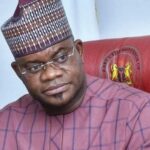
I gave the above title to an article that I worked on some years ago but never completed! It was prompted by the reduced demand for reading material in Hausa-and consequently reduced output in Hausa publications — over the past 25 years (since the early 1990s). Unlike the 1980s, when the NNPC (Northern Nigerian Publishing Company) in Zaria and the ‘Centre for the Study of Nigerian Languages’, attached to Bayero University Kano (BUK), championed the cause of Hausa, recent years have seen near stagnation in this field, and English has taken over more and more in schools, public life, and the media in the former Northern Region. Many Hausa-speakers today, especially those who use it as a second language, may seldom if ever read anything in Hausa and thus find difficulty when called upon to do so.
So it seemed to me, when I began that uncompleted article. It was to be based on the premise that the Hausa language flourished in the Northern Region/Northern states after the gradual replacement of ajami with the Roman script, and when the Superintendent of Education in the colonial Northern Region, Mr Rupert East, engaged the service of the young Abubakar Imam for Hausa translation in 1936.
Their fruitful partnership was instrumental in the establishment of the NNPC/Gaskiya Corporation in Zaria and led to what may be called the ‘golden age of Hausa,’ which produced classics such as Magana Jari Ce, Gandoki, and the weekly newspaper Gaskiya ta fi Kwabo. Imam’s first work, Ruwan Bagaja, came a little earlier, in 1933. This decade also saw the publication, in 1932, of Dr. Walter Miller’s Hausa Bible, Littafi Mai Tsarki, and the rapid adoption of Hausa in Roman script by Christian as well as Muslim clerics. It led to a plethora of publications in Hausa by the various Christian churches and groups.
In addition, Hausa was the medium of instruction in junior primary schools in most of the Northern Region and was the preferred language in the North Regional House of Assembly in Kaduna. It was also the language of the Armed Forces and the accepted ‘lingua franca’ in trade and commerce. As a result, other major vernacular languages – such as Fulfulde, Kanuri and Nupe – gradually gave way to Hausa, and it seemed set to be soon adopted as the common language of at least the geographical North (i.e. north of the Niger and Benue rivers). It had the advantage of being ideologically neutral – above tribe and religion — but also had the disadvantage of being a regional (Arewa) rather than a national language (as Swahili is in Tanzania).
This was still the case in the early 1980s, despite the abolition of the Northern Region in 1967 and the Federal Government’s adoption of a ‘Straight for English’ policy in the programme for Universal Primary Education. This would adversely affect the future of Hausa, although it would not have been realised at the time. The Hausa language structures established fifty years earlier were still in place in the 1980s and, aided by scholars from Ahmadu Bello University (ABU), Zaria was the recognised centre for Hausa scholarship and publications. In addition, the early masterpieces of Hausa literature (noted above) were followed by new and more contemporary authors who based their works in an independent Nigeria rather than its pre-colonial and colonial past. For example, we have the short novels of Suleiman Ibrahim Katsina – Mallakin Zuciyata, Turmin Danya, and Tura ta kai Bango – all published by the NNPC in 1982-1983. There was also the well-known Kulba na Barna, by Umar Danjuma Katsina, who also hailed from Katsina State.
In a review of Sulaiman Katsina’s work, published by the now defunct weekly magazine West Africa (19 May 1986), I wrote: “The novels of Sulaiman Ibrahim Katsina underline the struggle of the educated class in Northern Nigeria to come to grips with modern life. Their message, both for the individual and for society, is one of rectitude and concern for one’s fellow men. The philosophy is socialist, but it is an African socialism in which Allah is never far removed from our daily life.” I might add now that it is the African socialism of the late Malam Aminu Kano and his talakawa grassroots movement, which found expression in the political parties he founded: the Northern Elements Progressive Union (NEPU) in 1958, and the Peoples Redemption Party (PDP) before the 1979 election, both of which were firmly rooted in the city of Kano.
The publication of a Hausa version of the Quran, the work of Sheikh Abubakar Gummi (former Grand Khadi of the Northern Region), was also a major achievement at this time. There were, however, as hinted above, some worrying developments during the 1980s, which augured badly for the future of Hausa. A new generation of well-educated Northern scholars, in line with the ‘Straight for English’ policy, preferred to write in English rather than Hausa (drawn perhaps by the far wider reading public English gave them). For example, the late Dr. Ibrahim Tahir, who had been employed in the BBC Hausa Language Service team, published his celebrated novel The Last Imam in English in 1984, and in the same year Zaynab Alkali published The Stillborn. Both of these were set in the same social situation, as described by Sulaiman Katsina, but surely lost ‘flavour’ with the authors’ choice to publish in English. The same can be said of the novels of the late Abubakar Gimba (he died in February 2015).
In the case of Zaynab Alkali, it should be noted that Hausa is not her mother tongue, and so her idiomatic command of the language would not be as refined as that of Tahir. The same is true of Helon Habila from Gombe State, author of Waiting for Angel, and other authors from the Middle Belt of Nigeria, who are clearly more ‘at home’ in English than in Hausa.
The 1980s had begun with the publication of Neil Skinner’s Anthology of Hausa Literature, but I am not aware that there was a second updated edition of this work. By then the question of Hausa orthography had been standardised and the Centre for the Study of Nigerian Languages, attached to Bayero University College in Kano, had published some valuable works. They included the short but most useful Modern Hausa-English Dictionary/Sabon Kamus na Hausa zuwa Turanci, edited by Paul and Rozana Newman, in 1977 – a work which soon replaced the earlier larger dictionaries of Bargery and Abraham. Nevertheless, as far as I can judge, the Newmans’ dictionary did not lead to any major additions to the corpus of Hausa literature. Hausa has indeed held its own with English as a spoken language, in the markets and in social life in the North, and it has a huge audience for both national and foreign radio stations (not to speak of the ‘Kannywood’ film industry): but as a written language, it seems to be used less and less. It was for this reason that I entitled my aborted article, ‘The Rise and the Decline of Hausa Literature’.
The Second part of this article will be published next week.
Rev. Fr Hickey, OSA, is an Irish Catholic priest who has been in Nigeria since 1960. He is currently attached to St. Monica Catholic Church, Rantya, Jos.



